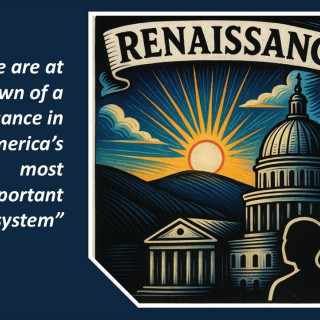Human-Centered Systems Are Urgent, Not Optional

Our public systems, especially those designed to support people in their most vulnerable moments, were not built for the way people live today and the challenges they face. Too often, they ask clients to conform to bureaucracy rather than meeting them with empathy, flexibility, and trust.
At Global True North (GTN), we recognize that sustainable transformation in health and human services (HHS) begins with fostering a new mindset that emphasizes the needs and perspectives of both those we serve and those who serve them. This shift away from traditional models paves the way for human-centered systems that prioritize the well-being of individuals and families.
What is a Human-Centered System?
A human-centered HHS system goes beyond simply incorporating empathy into existing bureaucratic processes. A human-centered system rebuilds trust by prioritizing the experiences of both clients and staff. It means asking hard but necessary questions:
What’s it like to apply for benefits when you’re already in crisis?
What does it feel like to work in a system that doesn’t give you the tools to help?
Human-centered design offers agencies a framework for addressing these questions with data, empathy, and urgency.
Why Culture is the First and Hardest Step
You can’t modernize a system without changing what it values. That means added outcome metrics alongside performance measures. It involves incorporating client stories into compliance practices, transitioning from reliance on compliance checklists to utilizing client narratives, and fostering collaboration among teams rather than depending on isolated experts.
To create a human-centered system, it's essential to intentionally disrupt these long-standing practices. This requires training staff to look beyond mere eligibility criteria and encouraging leadership to adopt performance metrics that genuinely reflect real-world impacts, such as family stability, workforce participation, and community well-being. The goal? Equip every staff member, from intake to leadership, to ask: "What will this decision mean for the person on the other side of the desk?"
GTN’s Human-Centered System Model in Action
The process of becoming a human-centered system includes:
Tiered HCD Training: Agencies begin with foundational awareness and gradually progress to applying design thinking within their program operations.
Modeling Through Leadership: Leaders who listen, act, and adapt visibly set the tone for others to follow.
Communities of Practice: Cross-functional teams test solutions in the field, not in theory.
Innovation Structures: Repeatable systems for surfacing and scaling great ideas from frontline teams through tools like journey mapping, personas, and targeted design sprints.
Community Feedback Loops: True co-design with the people who use and deliver services.
Aligned Messaging: Communications that reinforce shared values of urgency, dignity, purpose, and progress.
How You Know It’s Working
You’ll see it in small moments:
A client finishes an application without tears.
A worker feels heard, not burned out.
A team decides faster and with more confidence because they’re clear on what matters most.
And you’ll see it in outcomes:
Higher engagement.
Faster access to services.
Restored trust between systems and communities.
Lower workforce turnover
Cultural transformation in HHS isn’t measured in quarters; it’s measured in years and felt in moments. In the first year, GTN helps agencies lay the groundwork by aligning leadership, training staff, and designing structures for change. In year two, we support active implementation, including pilots, feedback loops, and iteration. Every step is rooted in the real stakes: families seeking stability, employees seeking purpose, and communities seeking trust.
Why GTN?
Our team includes former state HHS leaders who have sat in your chair and made tough decisions. We are aware of the constraints and possibilities, and we bring empathy alongside actionable guidance. Transformation isn’t abstract. It’s possible. It’s happening.


